Post-apocolyptic art: Daniel Arsham foresees life in 2044

Multi-disciplinary art-star Daniel Arsham is known for looking forwards. The Snarkitecture co-founder has a questioning, futuristic tone, that recurrs in whatever medium he’s picked that day – be it film, sculpture, paint or performance art. His new exhibition at Tokyo’s Nunzuka Gallery continues this probing theme through nine time-travelling works.
’My First Exhibition in Japan, Year 2044’ takes ageing media devices like boom-boxes and analogue cameras, and decays them in geological materials such as volcanic ash, selenite and crushed glass. Displayed with museum-like sterility, complete with holes, broken ariels and melted lenses, the objects are made alien, as if they’ve been excavated from a future archaeological dig.
We’ve seen Arsham destroy cameras before, back in 2012, where he plaster-cast them, then smashed them for ’Reach Ruin’ in Philadelphia. They appear again amongst the chalky rubble of his ’fictional archeology’ show in October 2015. These new sculptures have a darker, more sinister tone. The same intricate detail and satirical wit remains in their decay, but the smooth, ice-white plaster has been replaced by black tar and grainy ash.
Upping the stakes, Arsham has also fabricated a human body, preserved in a lava-like substance, with singed holes in the life-like skin. Protruding from the wall, trapped in stasis, the sculpture is reminiscent of the body casts at Pompeii. Eerily, only the face, arms and legs remain, with the feet still tucked in boots.
A little light is added to this prophetic showcase through four vibrant paintings of the moon, which use thick blue oils to create the bubbling crater-effect. Arsham’s film ’Future Relic’ also has a lunar theme, the last three chapters of which are on display. Posing as a potential future documentary, the film imagines a post-apocalyptic world in which large, geometric sections of the moon are excavated in an attempt to reverse the rising tides.
By citing the year ’2044’ in the title, Arsham creates a sense of urgency, hinting that this desolate land of ash clouds and heaving tides might not be so far away.

Ageing media devices like boom-boxes and analogue cameras, and cakes them in geological materials such as volcanic ash, selenite and crushed glass. Pictured: Volcanic Ash Eroded Leica M3 Camera, 2016
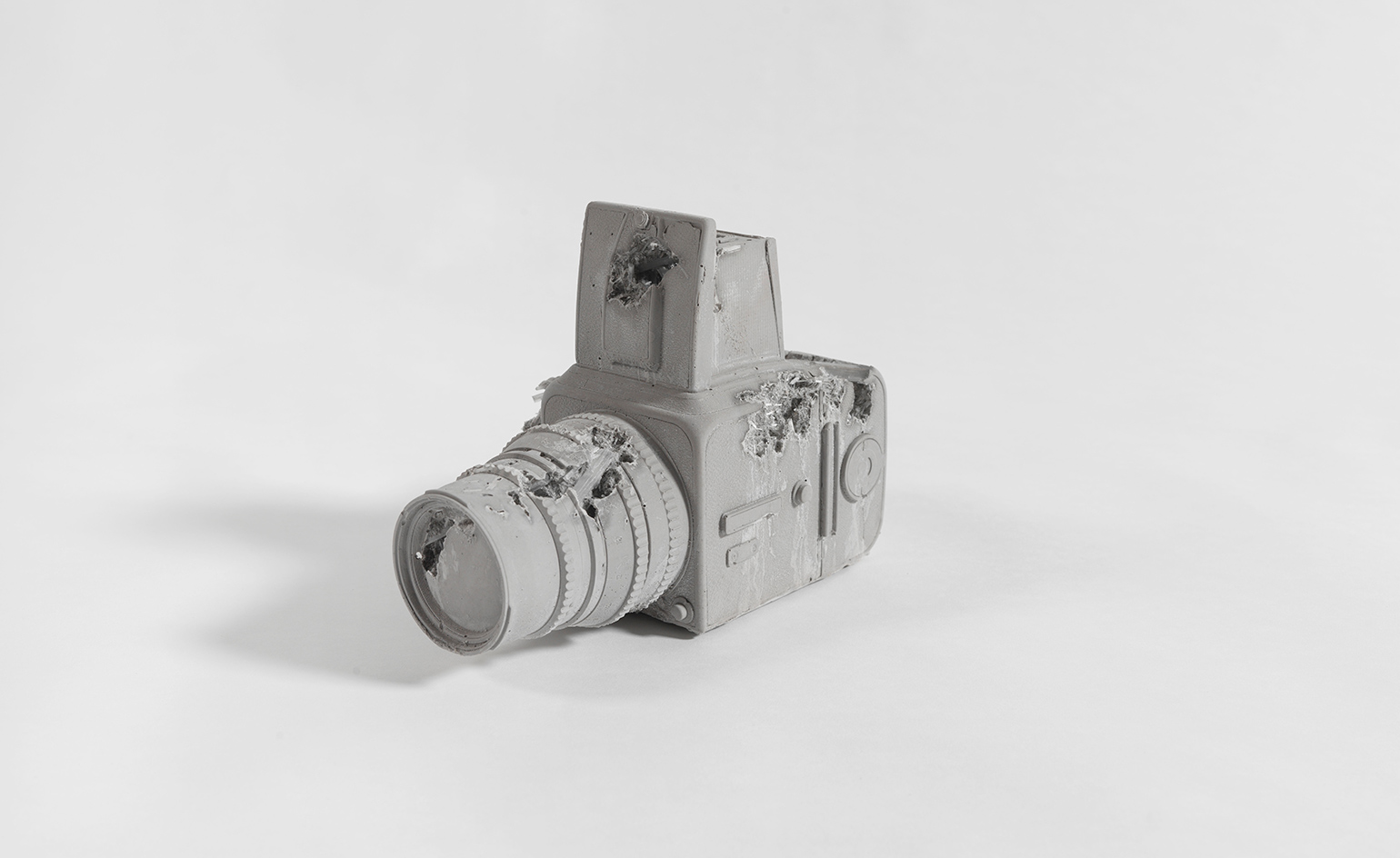
Displayed with museum-like precision, complete with holes, broken ariels and melted lenses, the objects are made alien, and look like they’ve been excavated from a future archaeological dig. Pictured: Selonite Eroded Hasselblad Camera, 2016

Arsham has also fabricated a human body, preserved in a lava-like substance, with singed holes in the life-like skin. Protruding from the wall, trapped in stasis, the sculpture is reminiscent of the body casts at Pompeii. Pictured: Pyrite Eroded Broken Figure (and detail), 2016
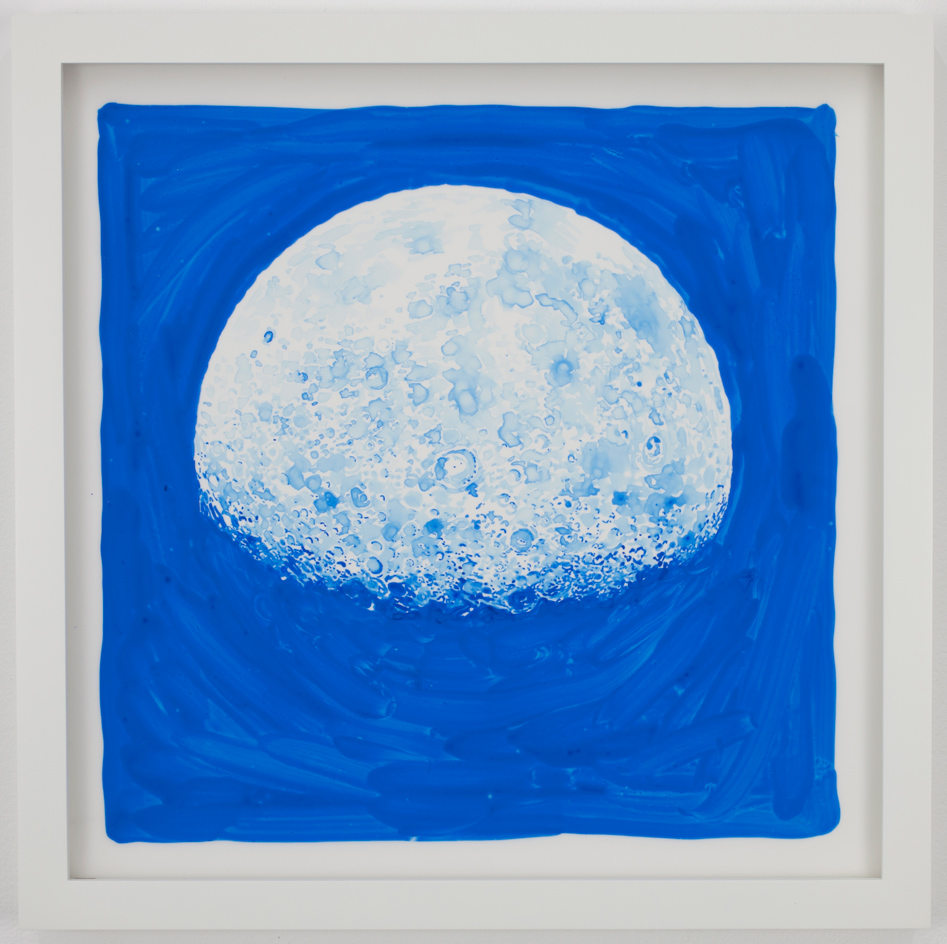
Arsham adds light to this prophetic showcase through four vibrant paintings of the moon. Pictured: Moon Painting (Blue 3), 2016
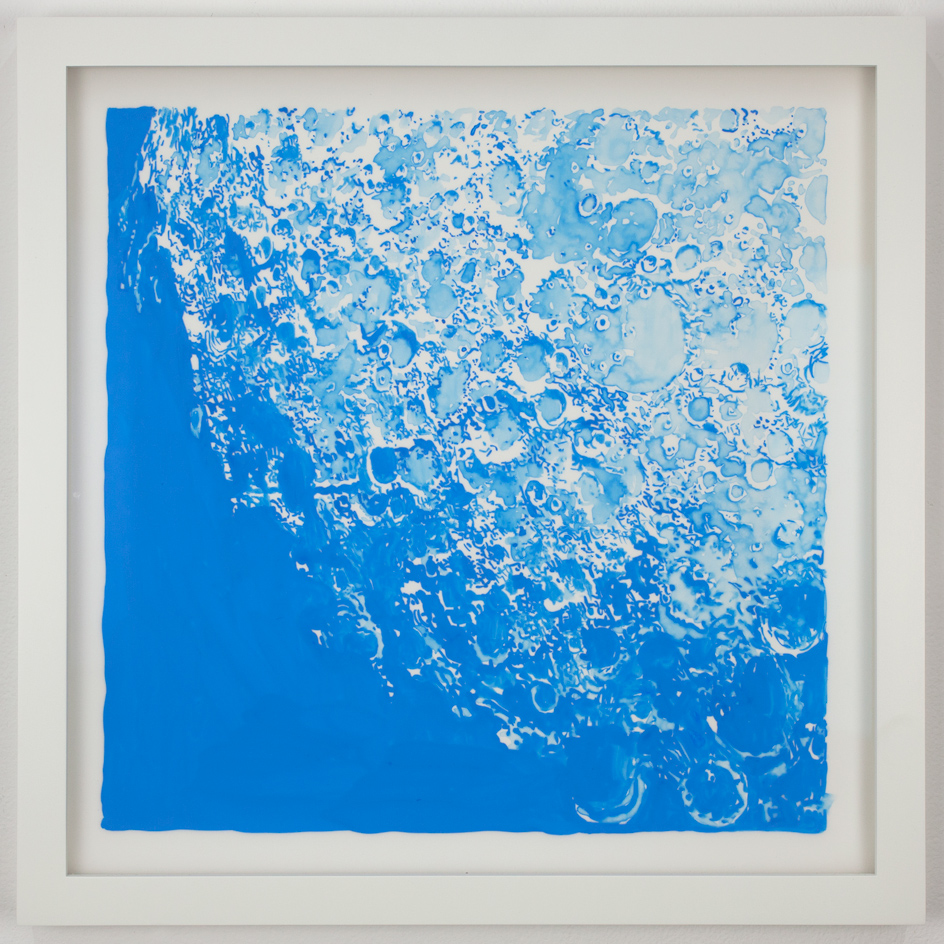
Thick blue oils are used to create the bubbling crater-effect. Pictured: Moon Painting (Blue 5), 2016
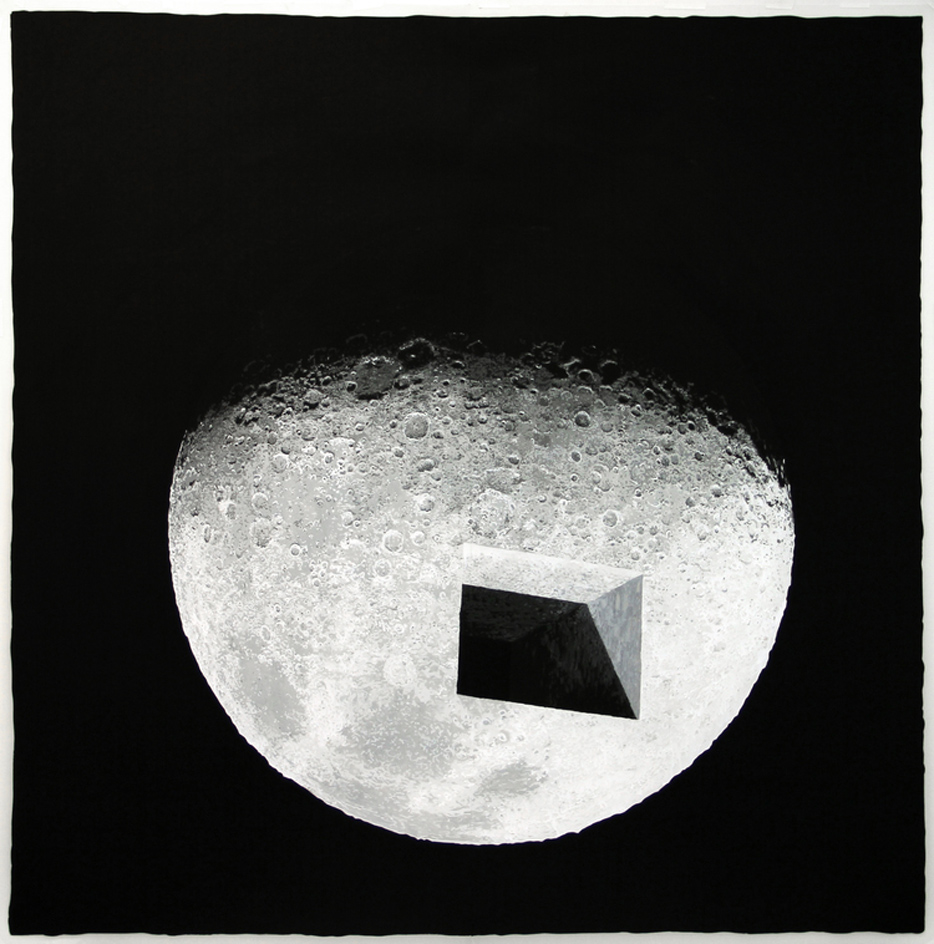
Arsham’s film ’Future Relic’, the last three chapters of which are on display, also has a lunar theme
INFORMATION
’My First Exhibition in Japan, Year 2044’ runs through 16 April 2016. For more information, visit the Nanzuka Gallery website
Receive our daily digest of inspiration, escapism and design stories from around the world direct to your inbox.
ADDRESS
Shibuya Ibis #B1F
2-17-3 Shibuya Shibuya-ku
Tokyo 150-0002, Japan
Photography courtesy the artist and Nanzuka Gallery
Elly Parsons is the Digital Editor of Wallpaper*, where she oversees Wallpaper.com and its social platforms. She has been with the brand since 2015 in various roles, spending time as digital writer – specialising in art, technology and contemporary culture – and as deputy digital editor. She was shortlisted for a PPA Award in 2017, has written extensively for many publications, and has contributed to three books. She is a guest lecturer in digital journalism at Goldsmiths University, London, where she also holds a masters degree in creative writing. Now, her main areas of expertise include content strategy, audience engagement, and social media.
-
 Usher opens up about breakfast playlists, banana pudding and why a glass tumbler is always on his rider
Usher opens up about breakfast playlists, banana pudding and why a glass tumbler is always on his riderOn the heels of a collaboration with Baccarat, the Grammy-winning singer-songwriter breaks down his entertaining tips. 'Hosting is an expression of how you feel about your guests and also who you are.'
-
 The beauty trends that will define 2026, from ultra-niche fragrances to anti-ageing dental care
The beauty trends that will define 2026, from ultra-niche fragrances to anti-ageing dental careAs we enter the new year, we speak to experts in fragrance, skincare, aesthetics, wellness and more about the trends that will be shaping the way we look
-
 The most stylish hotel debuts of 2025
The most stylish hotel debuts of 2025A Wallpaper* edit of this year’s defining hotel openings. Design-led stays to shape your next escape
-
 Yuko Mohri’s living installations play on Marcel Duchamp’s surrealism
Yuko Mohri’s living installations play on Marcel Duchamp’s surrealismThe artist’s seven new works on show at Milan’s Pirelli HangarBicocca explore the real and imaginary connections that run through society
-
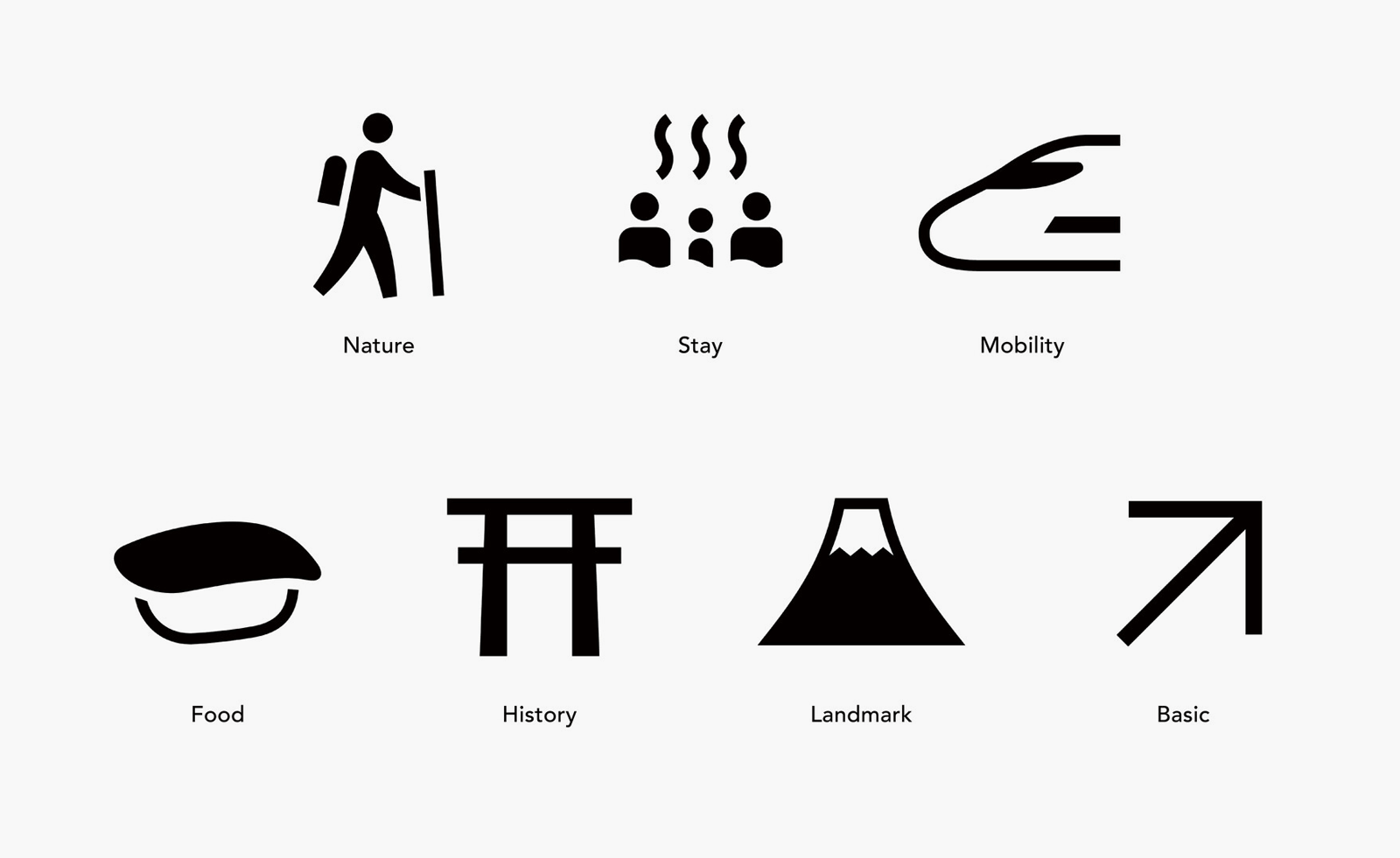 Get the picture? A new exhibition explores the beautiful simplicity of Japanese pictograms
Get the picture? A new exhibition explores the beautiful simplicity of Japanese pictogramsThe simple, minimalist forms of a pictogram are uniquely Japanese, as new exhibition 'Pictograms: Iconic Japanese Designs' illustrates
-
 Rolf Sachs’ largest exhibition to date, ‘Be-rühren’, is a playful study of touch
Rolf Sachs’ largest exhibition to date, ‘Be-rühren’, is a playful study of touchA collection of over 150 of Rolf Sachs’ works speaks to his preoccupation with transforming everyday objects to create art that is sensory – both emotionally and physically
-
 Architect Erin Besler is reframing the American tradition of barn raising
Architect Erin Besler is reframing the American tradition of barn raisingAt Art Omi sculpture and architecture park, NY, Besler turns barn raising into an inclusive project that challenges conventional notions of architecture
-
 What is recycling good for, asks Mika Rottenberg at Hauser & Wirth Menorca
What is recycling good for, asks Mika Rottenberg at Hauser & Wirth MenorcaUS-based artist Mika Rottenberg rethinks the possibilities of rubbish in a colourful exhibition, spanning films, drawings and eerily anthropomorphic lamps
-
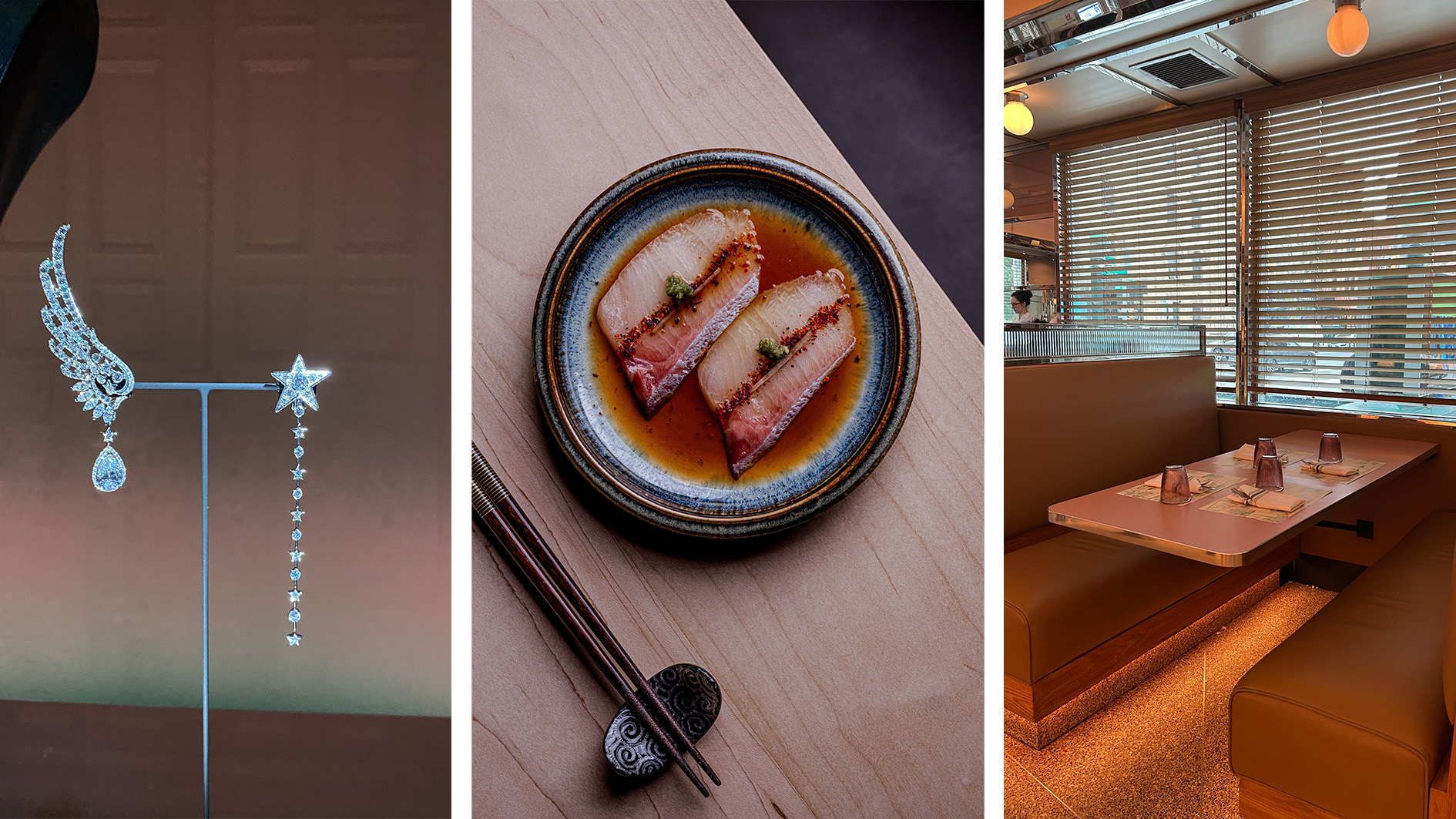 Out of office: the Wallpaper* editors’ picks of the week
Out of office: the Wallpaper* editors’ picks of the weekIt was a jam-packed week for the Wallpaper* staff, entailing furniture, tech and music launches and lots of good food – from afternoon tea to omakase
-
 San Francisco’s controversial monument, the Vaillancourt Fountain, could be facing demolition
San Francisco’s controversial monument, the Vaillancourt Fountain, could be facing demolitionThe brutalist fountain is conspicuously absent from renders showing a redeveloped Embarcadero Plaza and people are unhappy about it, including the structure’s 95-year-old designer
-
 See the fruits of Niki de Saint Phalle and Jean Tinguely's creative and romantic union at Hauser & Wirth Somerset
See the fruits of Niki de Saint Phalle and Jean Tinguely's creative and romantic union at Hauser & Wirth SomersetAn intimate exhibition at Hauser & Wirth Somerset explores three decades of a creative partnership